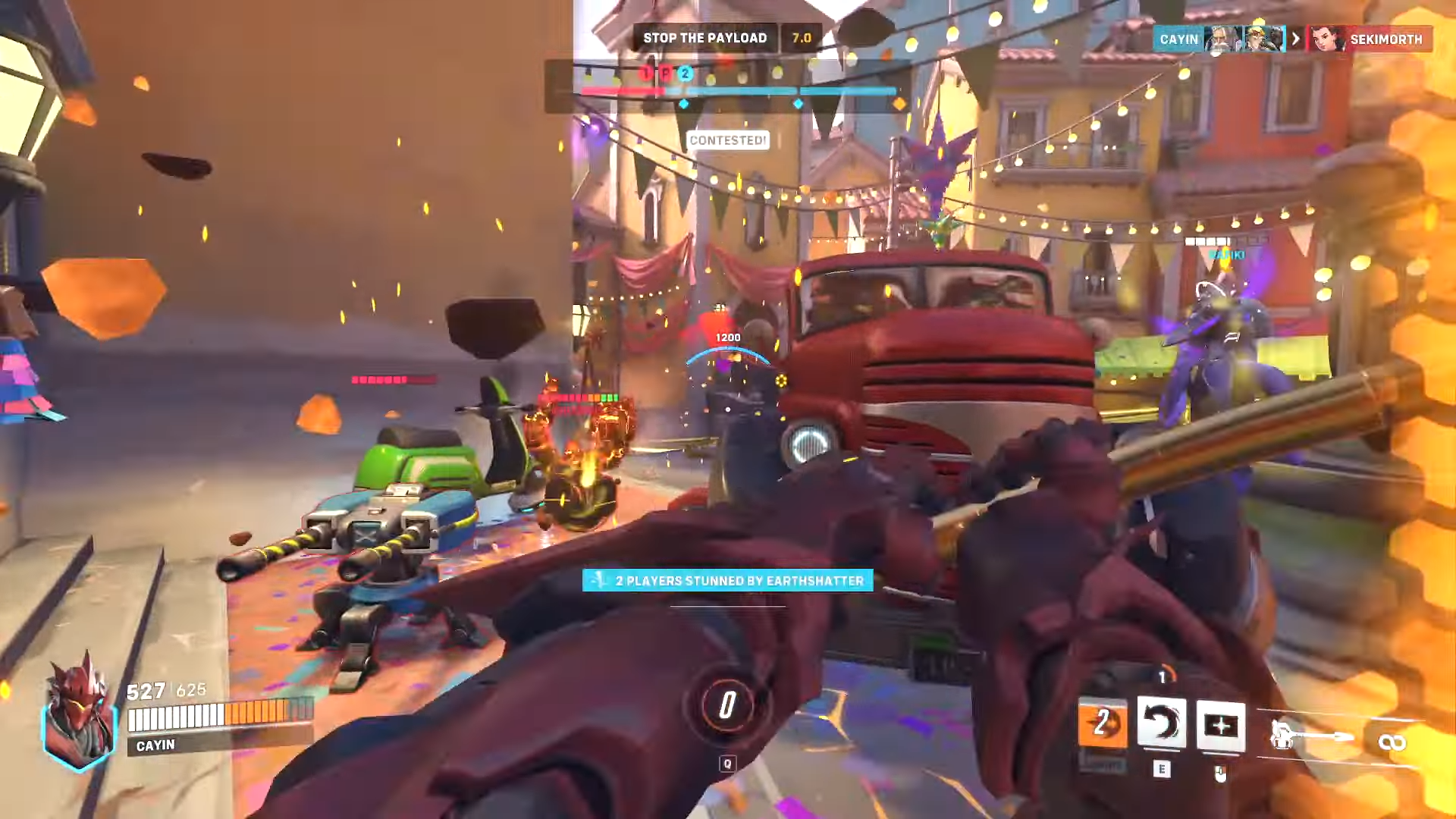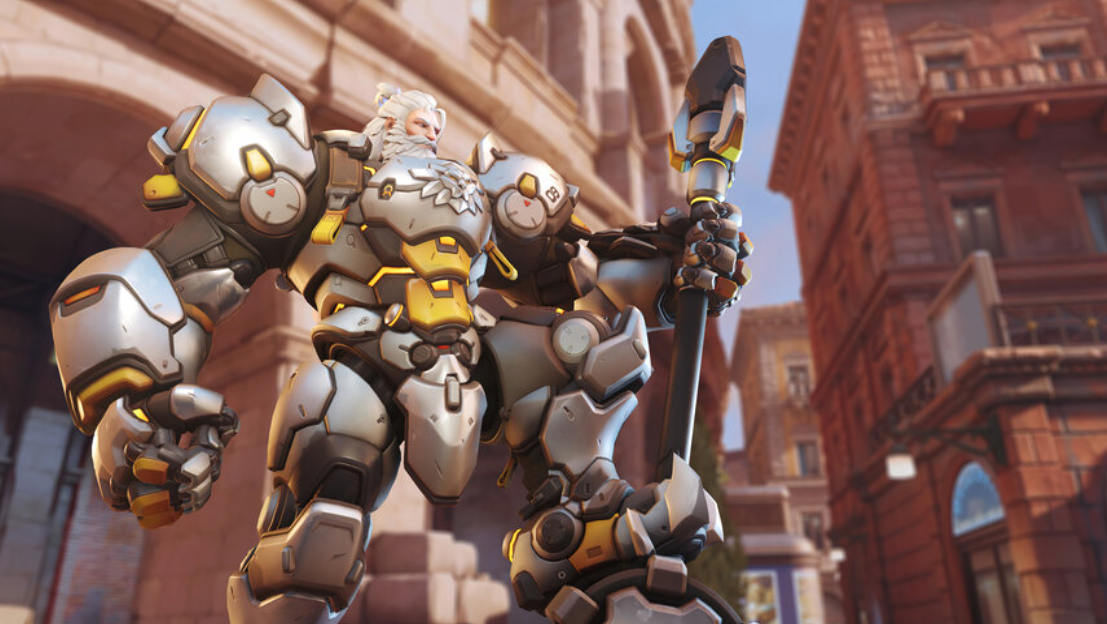Overwatch 2 has introduced some significant changes to the playstyle you may be familiar with from its predecessor. Some of the most significant changes have been made to the roles of DPS and Tanks.
Specifically, Tanks are far more powerful now and have become a more central part of any team composition since now there’s only one in a team. As such, you may be looking to dip your toes into the Tank meta. Let’s look at five things any budding Tank needs to remember before role-queueing!
Understanding The Tank Role
As a Tank, your primary function in a team is to create space. What does space mean? Generally, it means the ability for your team to roam and operate freely, though this is specifically important for your Damage heroes.
Creating space will involve a few things: engaging the enemy and ensuring you cannot be kited or ignored. Often, tanks are too easily outmaneuvered by the enemy team, rendering them useless. A good Tank sticks onto the enemy and draws all their attention while your Damage heroes pick them off, and your Supports ensure you stay in fighting form. Therefore, make sure you’re brazen as a Tank. Let out a Leroy Jenkins and charge headfirst into the fray.
Tips and Tricks For A Tank In Overwatch 2
Here’s our tips and tricks for a Tank in Overwatch 2 after hours of playthrough in Overwatch 1 and then consequently getting our feet wet with Overwatch 1 as well.
Know When To Back Off
As a Tank, you are pretty darn durable. However, some players mistake this for invincibility. Indeed, Tanks are difficult to kill, but not impossible! Make sure you are not over-extending into positions where your Supports cannot help you or into areas where your team cannot team fight effectively. As a Tank, you need to intelligently evaluate when you can press W and not look back and when you need to bide your time.

Furthermore, knowing when to disengage from a fight is also important. Given Overwatch 2 gives Tanks a more central role, it is essential that you stay alive whenever. A dead Tank will almost always mean a significant loss for your team.
Finally, you must now do everything an off-Tank once did in Overwatch 1. Since Overwatch 2 only has one Tank in a 5v5 composition, you must now sometimes disengage to protect your Supports and Damage heroes if they’re being gone on. Knowing when you need to push the envelope and when you need to help your team is another nuance an Overwatch 2 Tank must keep in mind.
Choose An Appropriate Tank

Not all Tanks are created equal. They can be generally classified into three types: shield, damage, and dive Tanks. When choosing a Tank, you must evaluate which one will provide the most utility to your team composition.
For example, if your team is very mobile and has good healing, a Dive Tank such as Winston or D.Va may be a good choice. However, if your team has very good DPS but is quite squishy, a Shield Tank such as Reinhardt or Sigma may come in handy. In general, think about what Tank you choose with respect to your team’s needs, and don’t just insta-lock your most comfortable pick.
Furthermore, your personal playstyle may jive better with some Tanks than others. If you’re an explosive player who likes to get up in everybody’s business, a dive Tank may suit you well. In particular, Winston has high mobility, very fast gameplay, and is more forgiving if your aim is not the best.
On the other hand, if you pride yourself on your mechanical ability, a damage Tank could be a good idea. These types of Tanks can deal significant damage, provided you have good tracking and aim. Essentially, you can pick a Tank that complements your preferred playstyle.
Understand Your Worth
A Tank is the most important hero type in Overwatch 2. Previously, having two Tanks meant that a team composition could accomplish a lot by picking an appropriate pair of Tanks. However, only one Tank is allowed in Overwatch 2 in a competitive 5v5 composition. As such, there are a few things you must keep in mind when playing such an important role:
- Ensure you are leading the team. Your team will depend on your protection and general durability to initiate team fights. As such, you need to be bold and take the initiative. This is especially relevant for dive Tanks, whose entire gimmick is getting up in the enemy’s face and retreating if the situation grows dire. While this sort of initiation may be difficult for newer players, it will become easier as you grow into your Tankhood.
- Your pick will determine what your team can pick. It is imperative to be thoughtful with your Tank pick. Slow Tanks such as Reinhardt may force certain Support picks that increase mobility, whereas selecting a more mobile Tank may free up that Support role to go for something with more damage or heal. As you are the only Tank in your team, picks will often be made to maximize your potential. Therefore, do not choose a Tank that forces your team to pick solely around you.
Focus On High-Value Targets
In a team fight, some Heroes are more dangerous than others. As a Tank, you need to decide which Heroes pose a greater threat to you and your backline. Make sure you are not just going for the easiest frags but focusing on Heroes that are likeliest to swing the team fight against you.
Who these Heroes are will depend on a number of factors, such as your team composition, the enemy’s composition, where the team fight is happening, etc.
Always Keep Learning
At the end of the day, no one can be the perfect Tank. What matters far is that you continue learning and refining your gameplay. Do not make excuses for your bad plays; instead, analyze what you could have done differently.
Learn from players that are better than you, and do not be afraid to ask others for advice. Finally, make sure you stay positive, communicate with your team, and have fun!
Best Tanks To Get Started With: Reinhardt
Reinhardt looks like a Tank, plays like a Tank, and feels like one too. Reinhardt definitely isn’t the best Tanks in the game. This is because his DPS is very situational, and at higher levels of play, you can get punished by playing him quite excessively.

However, the reason why beginners work great with Reinhardt is that his kit is extremely simple. A shield, a giant weapon to swing it, a charge that lets you gain some semblance of mobility and an Ultimate that knocks people down – what’s hard to understand?
Plus, Reinhardt has one of the best shields in the game. So, you’ll be able to protect your team quite easily given its large AoE and its high HP. Even if you aren’t that great at the game, all you need to do is position your shield such that it soaks up the damage rather than the team.
Next, stick close to your objective, stay in front of your team (give call-outs if necessary), and you should be having a mighty good time. As soon as you get better at the game and feel like branching out, Roadhog is an excellent Tank for dealing DPS while also learning some skillshots.
Or, you can go towards a more traditional route and play Zarya instead. She’s great in Overwatch 2 and actually ends up dealing more damage than most DPS heroes in some instances.



